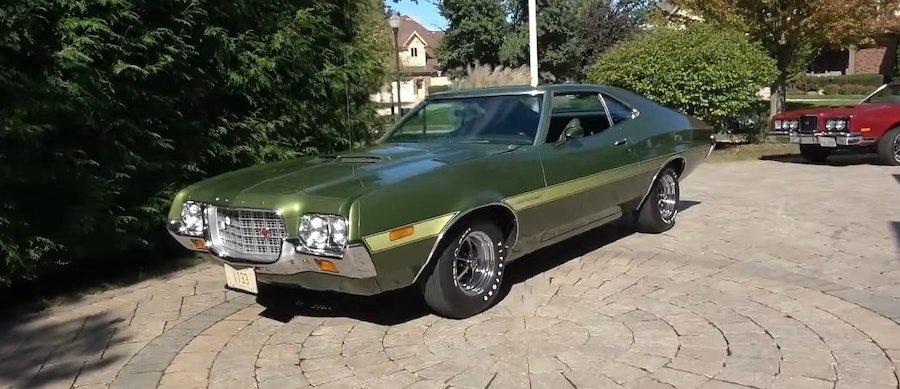1972 Gran Torino Sport Boasts Super Rare Treats in Plain Sight, Hidden Gem on the Dash

The muscle car age was fading to submission to the EPA, the insurers, and pretty much every other disease imaginable. Emissions requirements became increasingly stringent, and almost all automotive engineers called it quits.
Almost, because there were some signs of resistance – Ford, for example, grew some extra chest hair and restyled the Gran Torino from the ground up. A new body-on-frame layout, a Coke bottle profile, and several performance options were enough to convince buyers to lay siege to the Blue Oval dealerships.
The gaping oval grille stuck between the quad headlights earned the Ford Gran Torino the not-so-flattering compliment of "land‑locked tunas sucking air." It was not the most exhilarating simile, but there was a bit of involuntary truthfulness in that phrase, which was loosely applicable to a very low number of examples. 71, to be precise – out of nearly half a million Torinos (both the base version and the high-performance Gran Torino variant).
The ultra-cool feature is literally just that: a functional hood scoop that fed cold air directly to the carburetor. However, due to changes in pollution policies, very few cars were ordered with the blowhole on the hood – the option was deleted from the options list afterward. The sales literature featured the direct air intake on the Gran Torino Sport – the apex predator of Ford’s intermediate lineup – and here is one of those select few that have it.
The car belongs to a certain Anthony Lucarz, who bought it in 1997, restored it to factory settings and specifications, and proudly displays it every now and then at car meetings and other piston-powered events. As expected, a rarity like this is the treat of the day for Lou Costabile – he and Mr. Lucarz go back a long time, thanks to this splendid Ford muscle car from 1972.
The car is armed with the 351 cubic-inch ‘Cleveland’ V8 (5.8 liters) Cobra Jet, a four-speed manual transmission with a Hurst shifter, and an 8,000-RPM tachometer. That’s the second rarity of a 1972 Gran Torino Sport – after a short production run, the rev-meter was replaced with a much more modest 6,000-RPM dial. The manual transmission could only be installed on 351-4V motors.
The four-barrel 351 was a Cobra Jet continuation that developed 248 SAE net horses and 299 lb-ft (405 Nm) of torque. The open combustion chamber design and an 8.6:1 compression made the fabled motor the king of the hill in terms of power in Ford’s hierarchy.
That’s right, the 429-incher (a member of the same family that had given the world legends such as the 1968 Cobra Jet and Super Cobra Jet drag racing tyrants) was rated at 205 hp – s very domestic camshaft, hydraulic lifters, and small-port heads tamed the 7.0-liter behemoth into submission. However, the four-barrel-fed motor was still atop everyone else from the Torino clan in terms of torque: 322 lb-ft (437 Nm) net rating.
This particular Gran Torino Sport also sports the Rallye Equipment Group: eight round gauges – or ‘pods’ in Ford parlance – adorn the instruments cluster. The odometer showed 65,000 miles (105,000 km) in October of last year, only 6,000 (9,600 Km) more than it had ten years ago.
Incredibly, the Torino and Gran Torino models were offered in nine body styles, from wagons to four-door sedans to Sportsroof hardtops (like the one featured here). The former was reserved for the ‘Sport’ versions only, and it was assembled in almost 61,000 units, almost twice as its twin cousin, the regular hardtop.
Noticias relacionadas
